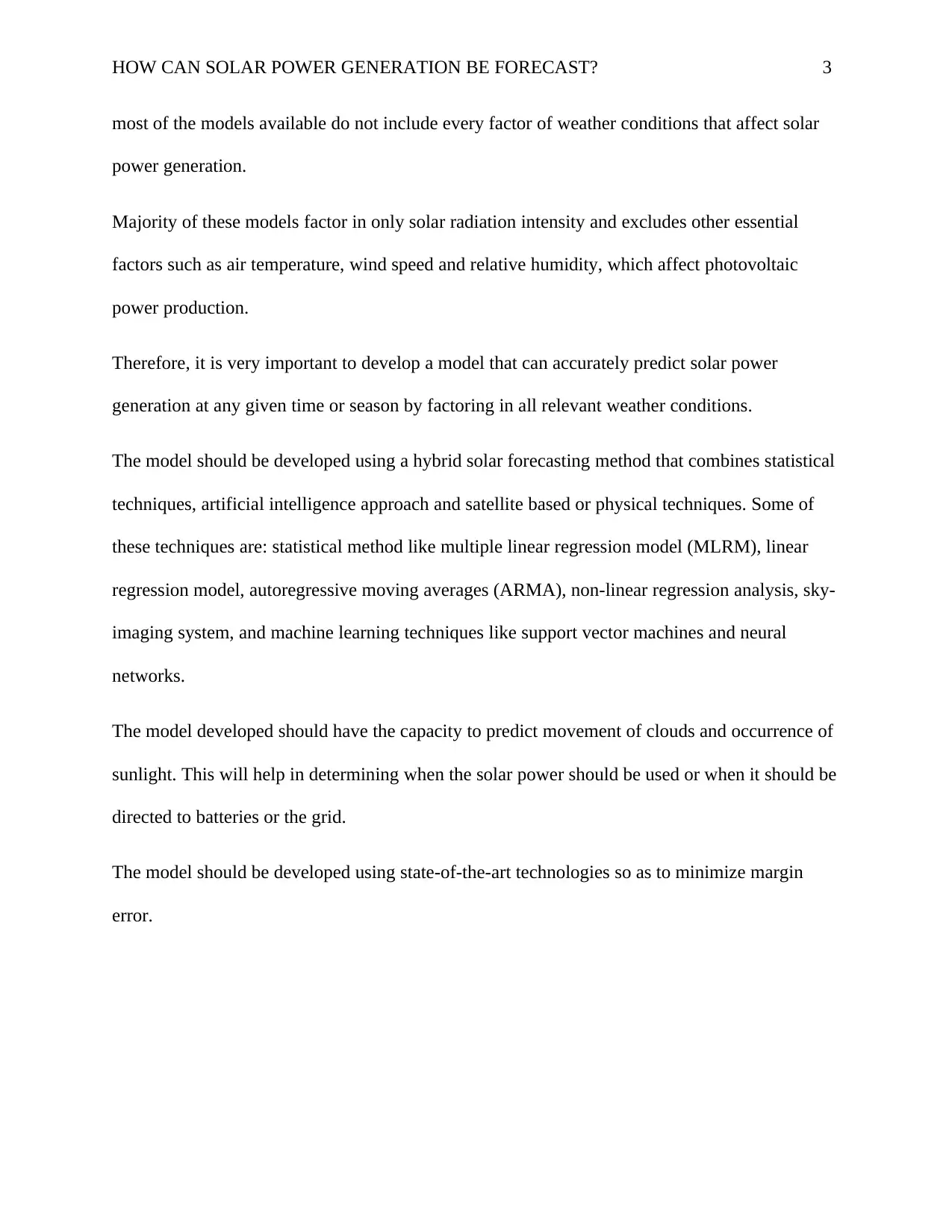EGH404 Research in Engineering: Forecasting Solar Power Generation
VerifiedAdded on 2023/04/03
|3
|513
|92
Report
AI Summary
This report addresses the increasing global energy demand and the importance of renewable energy sources, particularly solar power. It highlights the challenges of solar power generation, mainly its variability due to weather conditions. The report focuses on predicting the impact of weather on solar power generation and proposes developing an accurate forecasting model. This model should incorporate various weather factors like solar radiation intensity, air temperature, wind speed, and relative humidity, using a hybrid approach combining statistical techniques, artificial intelligence, and satellite-based methods. Techniques mentioned include multiple linear regression, autoregressive moving averages, sky-imaging systems, support vector machines, and neural networks. The model should predict cloud movement and sunlight occurrence to optimize solar power usage, directing power to batteries or the grid as needed, and should be developed using state-of-the-art technologies to minimize error.
1 out of 3










![[object Object]](/_next/static/media/star-bottom.7253800d.svg)